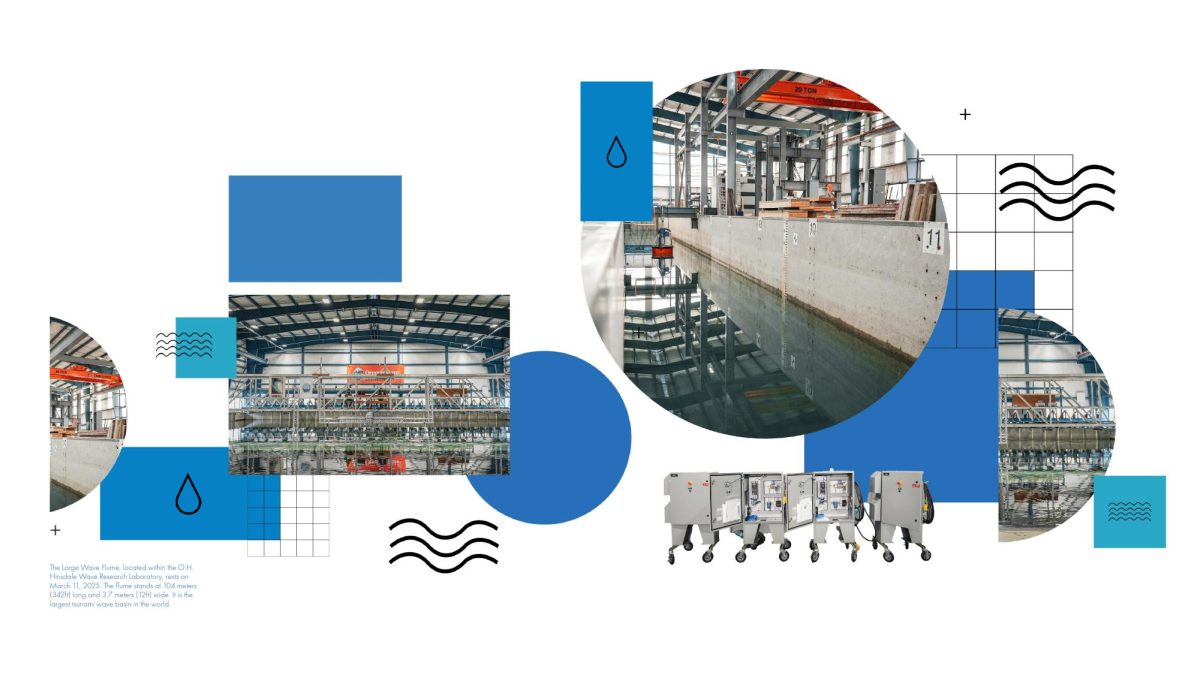At Oregon State University, the tide is not just turning, it is being studied, stimulated and engineered for a more structurally resilient future.
On the edge of OSU’s campus, lies the O.H. Hinsdale Wave Research Laboratory, commonly known as the Wave Lab, which is working to make waves in coastal engineering and resilience research.
By blending scientific discovery with real-world applications, the lab supports their mission of enhancing coastal resilience and developing forward-thinking solutions for coastal infrastructure.
They are the largest and most advanced wave research facility in the country. That means the lab plays a critical role in studying all sorts of directions: ocean dynamics, testing coastal infrastructure, coastal erosion, harbor design, renewable energy solutions, even simulating tsunamis.
The researchers there are partially responsible for preparing communities for potentially extreme weather events like tsunamis. Besides this, the students and researchers work with cutting-edge tools to explore the power of water.
While computer models and small-scale basins can provide researchers some usable data, the researchers at the Wave Lab get to use much larger tools. Two large wave basins take up a majority of the facility. A flume, or a large channel for moving water, takes up another part of the sprawling facility.
The larger scale of these allows researchers to better simulate realistic ocean conditions.
One key project involves studying the role of mangroves in reducing the destructive effects of waves on coastal infrastructure.
Rebekah Miller, a civil engineer at the Wave Lab, is part of this research on mangroves and natural hazards. She said the project examines how mangroves can absorb wave energy, reducing the impact of storms on coastal communities.
These kinds of tests provide vital data to help cities build resilience against hurricanes and tsunamis.
“We had a group from the University of Hawaii here. … We partner together and get a model of the reefs that they want to build off the coast in Hawaii, testing to see basically how well the reefs are going to dissipate the waves and (conducting) research on the velocity of the water moving through the reef structures,” Miller said.
Beyond its research capabilities, the Wave Lab is also an educational hub. They offer outreach programs meant to engage students in the science of oceanography and engineering.
The lab also delves into critical research on coastal infrastructure, or the best way to build houses, bridges and harbors on coasts.
These structures must be able to withstand environmental factors like increased erosion and strong wave forces. One project being tested in the lab examines how different bridge designs hold up against wave-induced scouring, an issue that affects the integrity of support columns.
“If you have a (bridge) column built and you want to put it into the earth, how is the wave action going to affect that column and the earth around it?” Miller said. “If they can (determine) what the impact of the waves will be on a pedestrian bridge, … (they could) design it in a way that the bridge is going to continue to stand.”
As part of these efforts, students gain hands-on experience in building structures, installing instrumentation and interpreting experimental data.
The lab hosts undergraduate and graduate student research projects, internships and cooperative education opportunities. These opportunities allow for students to gain practical knowledge about coastal engineering.
Wave Lab research also pushes the boundaries of renewable energy.
One notable initiative is testing wave energy converters, devices designed to capture the power of waves and convert it into electricity.
All of this research is fairly unique. But one of the most unique aspects of the Wave Lab is its collaborative atmosphere.
Students and researchers from many fields — civil engineering, electrical engineering, oceanography and beyond — work together to solve some of the world’s most pressing coastal challenges.
“It’s not all just engineers,” Miller said.
For more information on O.H Hinsdale Wave Research Laboratory, visit their website.




















